- Home
- About us
- Products
- Dealer Enquiry
- Blog
- Contact Us
- Home
- About us
- Products
- Dealer Enquiry
- Contact Us
- 044 -2486 1994
- +91 99623 98222
- sales@nantech.in
- REQUEST A QUOTE
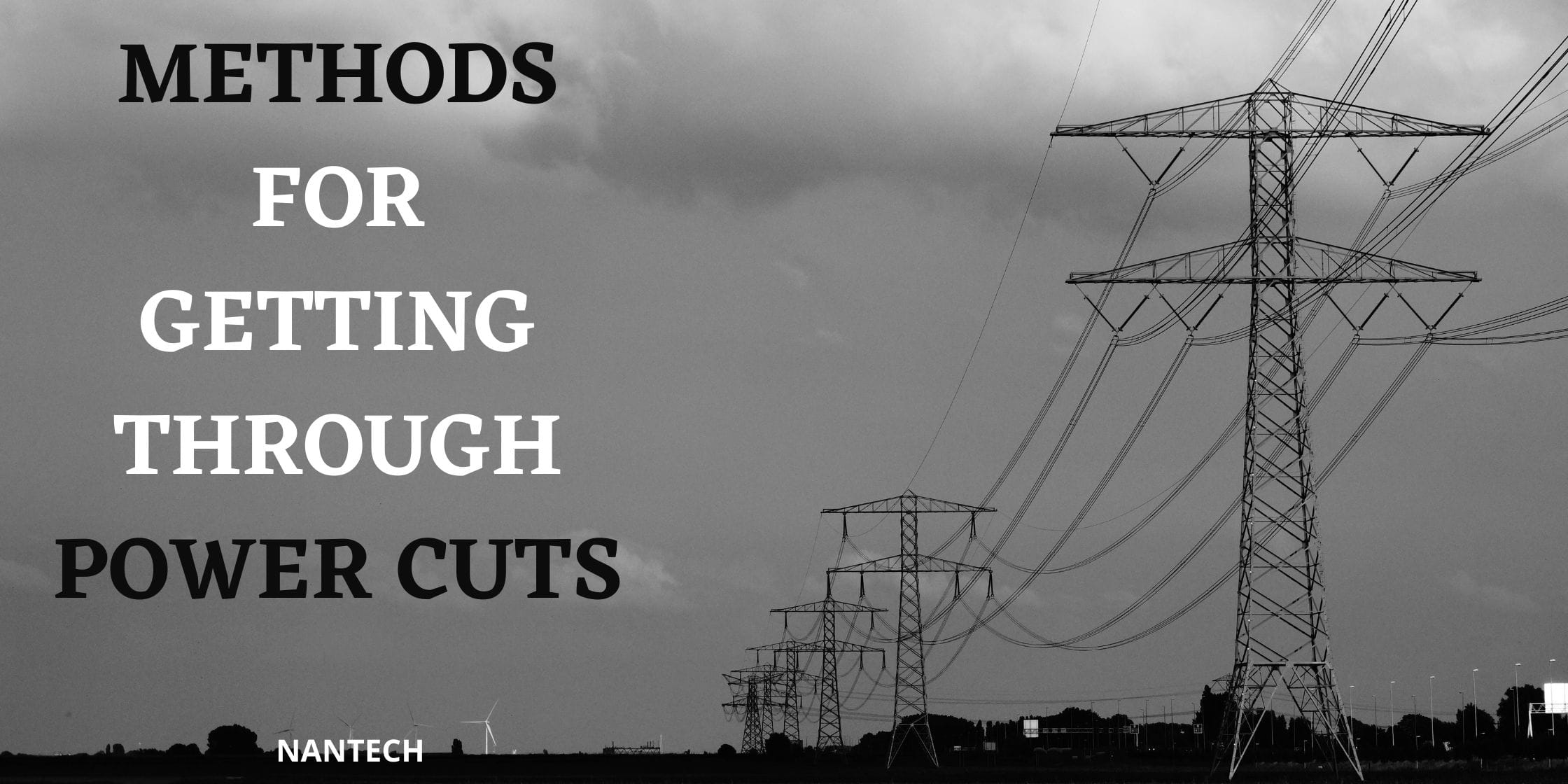
We heavily rely on electricity for our needs. From businesses to homes, office buildings, and factories – everywhere we depend on electricity for not just our day-to-day operations and conveniences, but also for maximizing business profits and sustaining organizations. Electricity is a key resource in every aspect of our lives today.
In a previous article, we mentioned how Chennai faces power cuts, and all the statistics related to it. We now know that power cuts can occur anytime and anywhere, hence we must prepare for the same by equipping ourselves with the right products to get us through one.
Fortunately, there are many such products and devices available in the market that are made so that we can get through such power cuts. Mainly, an Uninterrupted Power Supply (UPS) system is used, but there is one more feasible method that can prove more beneficial! This article shall give you an overview of all such methods, and in the end, a link to the best place to get them in Chennai!
UPS systems are the most common methods of mitigating power failures. The main idea of these systems is that there is a battery to store power, an AC/DC converting rectifier, and a DC/AC converting inverter. Many brands are available for the same as well. There are three types of UPS systems that are commonly used:
Online UPS systems – currently the best UPS system available in the market. This uses a ‘double-conversion’ process, first converting AC/DC to the battery, and in case of a failure, DC/AC back to the inverter, and then to the power lines. This has excellent noise protection, almost no power transfer time delay, and within ±2-3% voltage regulation, making it suitable for critical equipment.
Line-Interactive UPS Systems – These provide intermediate-level power protection. Here, a bypass carries power from your inverter (connected to the main line) to the batteries for charging, and the battery discharges back to your inverter in case of a failure. It also has better surge protection, 2-4ms delay in power transfer time, and output voltage regulation within ±8-15% of nominal voltage.
Offline UPS Systems – These provide a basic level of power protection for your equipment. We connect a battery in parallel to the supply line, and during the case of a failure, the battery supplies power to your connections. These provide little surge protection, a 2-10ms delay in power transfer for your systems in a failure, and little voltage regulation.
Also Read: Power Cuts Frequency in Chennai
Solar power systems are slowly gaining traction, both in business investments and in research advancement and funding. They mitigate carbon footprints and reduce pollution. We mention Solar systems because Chennai has a tropical climate for the most part of the year, where the sun shines upon us. Why not utilize it? Some uses for solar technologies are:
Nantech is your go-to shop in Chennai for all products pertaining to UPS systems, inverters, transformers, solar panels, SVRs - anything you may need! Please check us out by clicking the link!

Chennai is one of India’s bustling metropolitan cities, with many businesses running their day-to-day operations to many households living and thriving in communities and societies. Many restaurants are serving quick idlis, vadais, and dosas for people rushing to their offices, and many schools and institutes are grooming tomorrow's future. Even Metros are now coming to many areas, and soon we shall indeed be a metropolitan city.
Noticed something familiar in all these examples? They all require electricity. A day of not having electricity can make most of these businesses lose customers and hence profits. As an example, if metros don't get a power supply, their facility will completely stop. A regular office-going person wouldn’t be able to catch his train on time then.
Hence in this article, we shall explain how frequent power cuts are in Chennai and why they are essential for you to know. Through this article, we aim to convince you to invest in power-saving equipment that will benefit your business(es).
Now keep in mind that when we say power cuts, we could refer to two different scenarios:
An electrical fault in the supply line - This problem is something we should consider. Any issue (say) in the carrier line or a transformer at the electricity generation plant can make you have to wait while the power gets restored. Now here too, there are two sub-categories:
We can use scheduled outages as a metric since the others are something we cannot track. Please note that we are giving rough estimates backed by sufficient research. Now coming to the actual statistics:
In the last three years,
| Year | Number of Outages Scheduled | Number of Outage Areas/Events | Total number of Outage Events |
|---|---|---|---|
| 2019 | 19 | 7-8 | 133-152 |
| 2018 | 15 | 5-6 | 75-90 |
| 2017 | 14 | 5-6 | 75-90 |
We see that the power cuts have been increasing in frequency over the last three years. This data shows us that we need to prepare for any scenario by investing in good quality power-saving equipment. Nantech is your go-to place for all your power-saving needs in Chennai, with excellent products and services! Please come and check us out here, and we assure you of an enriching and rewarding experience!
We wish you a Happy New Year and Happy Shopping!
Reference
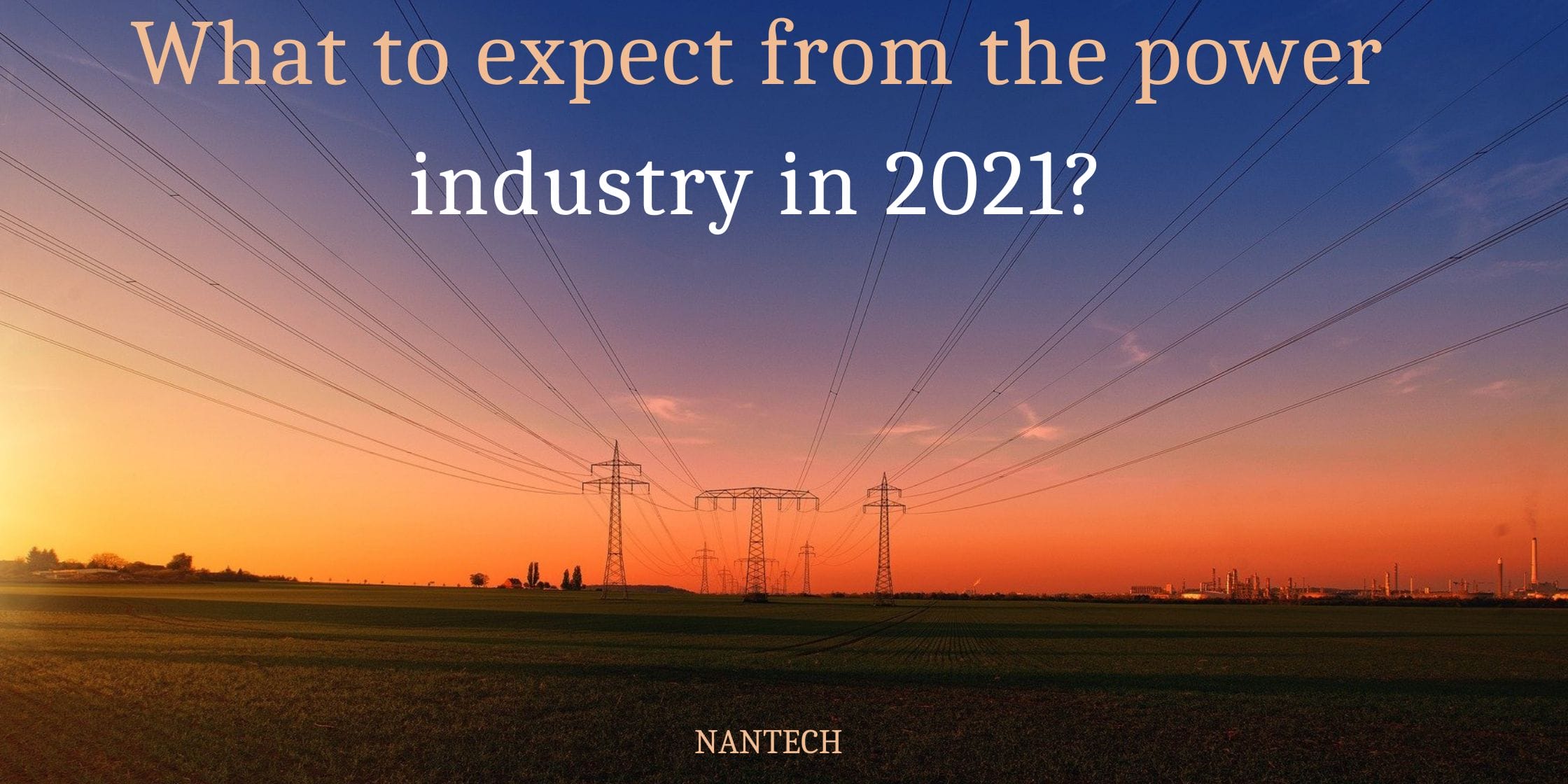
2020 was a rollercoaster ride for the world, effects of which have not wanned off yet and are expected to move onto 2021. Similar to other industries, the power industry also had to face a situation of massive unpredictability, not only in India but the rest of the world too. With threats like climate change and global warming inching closer, countries are ready to take bold steps to counter the threat. Of these countermeasures, changes in the power industry will be at the forefront of the battle.
In India, the government has revised its renewable energy target from 175 gigawatts to 220 gigawatts for 2022. That is a big step towards job creation and achieving carbon neutrality. Objectively, India’s power industry has three main focal points to deal with.
During the pandemic, new light was shone on the viability and stability of working in the IT industry and data center industry. The government has announced the installation of another one crore data center. These centers consume enormous amounts of power, and the power industry is expected to soon, incorporate a hybrid of coal and renewable energy transmission to supply this enormous demand. If planned efficiently, the transparent incorporation of renewable energy sources will greatly cut down on power losses and assist in achieving carbon neutrality. Renewable energy will also assist in data expansion and accommodate a higher capacity for data processing. The power industry will have to go the extra mile to maintain the robustness of its grid system and prevent shutdowns.
Also Read: Can Inverters Save Electricity?
A steady rise in sales and development of electric vehicles has been observed all around the world. Though not officially introduced in India, there have been talks of Elon Musk headed Tesla electric vehicles to start sales in mid-2021 in India. Since they are charged by electricity and houses need to have a steady source of renewable energy to charge the cars. That provides a boost to the upcoming solar inverters market that will help in job creation and environmental sustainability. Along with this, India has developed a single national power system and invested a lot of money in renewable energy making the transition from petrol and diesel to electric vehicles an easy one. In other parts of the world, innovation and development have led to the development of green hydrogen-powered homes and cars which release only oxygen and water vapor as their byproducts. The TATA automobile industry has also collaborated with foreign countries and invested in hydrogen-powered vehicles.
With most countries like The United States of America, The United Kingdom, and China pledging to become carbon neutral by 2050 and so on. India is not too far behind on making the same promise. To achieve this, massive electrification with thoughtful use and incorporation of renewable energy is of paramount importance. Being carbon neutral means absorbing all the carbon a country produces, leaving a net-zero carbon emission. As the consumption of electricity does not produce carbon dioxide, its widescale application has become mandatory.
The future of the power industry in 2021 is going to be dynamic. As the global focus of the power industry is shifting towards renewable energy, we at Nantech will do our best to assist by providing cost-effective renewable energy equipment.
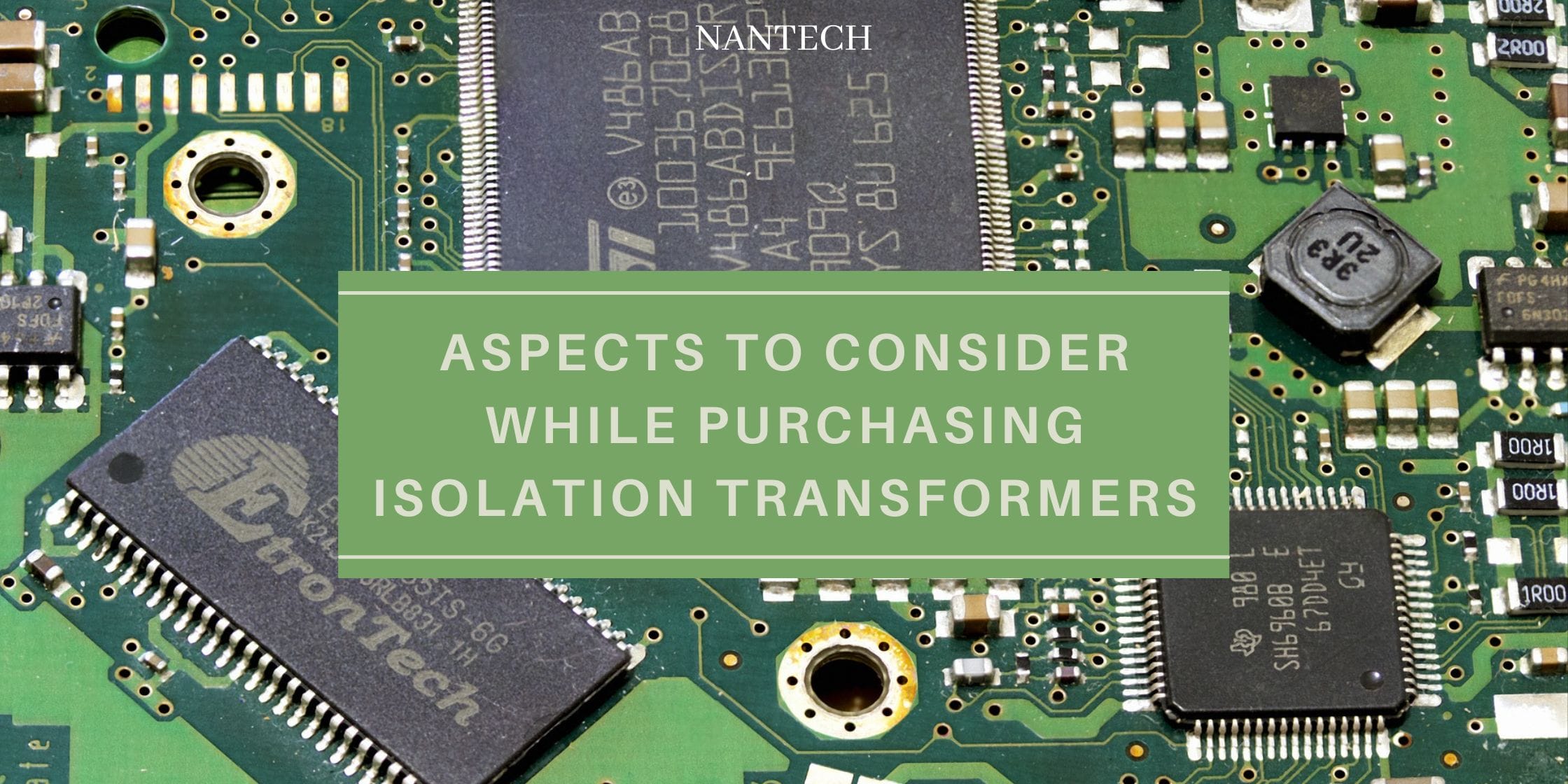
Chennai is a bustling metropolitan city with many people relying on the clean current to reach them. Transformers are an essential part of this chain of getting power to your buildings, and most transformers these days aren't equipped with the latest technology in the market.
An upgrade to the transformers used these days are isolation transformers. They are just like a regular transformer, but the windings couple through a common iron core. The coils have a turn ratio of N2/N1=1, and this setup helps us a lot in reducing power line problems like surges and spikes, and hence without electrically connecting the two circuits, one can safely pass AC. It provides galvanic isolation, which protects your equipment from electric shocks and suppresses noise in sensitive devices.
With a wide range of products available in the market, one must consider some aspects before purchasing isolation transformers. These are:
Since we use transformers to change the primary power supply voltage, we must carefully consider this factor. Even though transformers can accommodate different voltages, the primary power supply voltage will determine the transformer's input voltage. You can then decide the output voltage as per requirements.
We need to decide whether we have a single-phase or a three-phase requirement and accordingly choose our variant. This will depend on our output requirement. If we transport current to a house, small home, or an apartment building, we shouldn't need more than single-phase power and hence single-phase transformers for the job. Whereas if we are to supply to industries and factories that use heavy loads and heavy-duty equipment, we need a three-phase supply and choose a three-phase transformer.
This is a factor that deals with the question, "What is the requirement of our load?" For this, we need to consider both the size and the type of load involved. This one should ideally consider along with the previous consideration.
Consider this before you finalize your product for purchase. Where are you going to install the transformer – will it be indoors or outdoors? Depending on this, you have to make sure that your transformer has the necessary physical capabilities to withstand whatever the environment throws at it. That’s not all! Is your transformer going to be installed near any hazardous substances or some other dangerous environment? Ask these questions before you finalize your product's purchase and adjust either your setting or change the product to suit your needs of the installation.
After you consider all of the above factors, you can now get in touch with Nantech, which has all your transformer needs taken care of! With excellent quality products, easy installation, top-notch customer care, and timely after-sales support, you can rest assured of your purchase to be a great one! They have both single and three-phase transformers with ranges from 500-1500 kVA. They have a compact design that can upgrade your current transformer. There are Step-up, Step-down, and K-Rated transformers for you to choose from as well! Please go check them out now, and Happy Shopping!
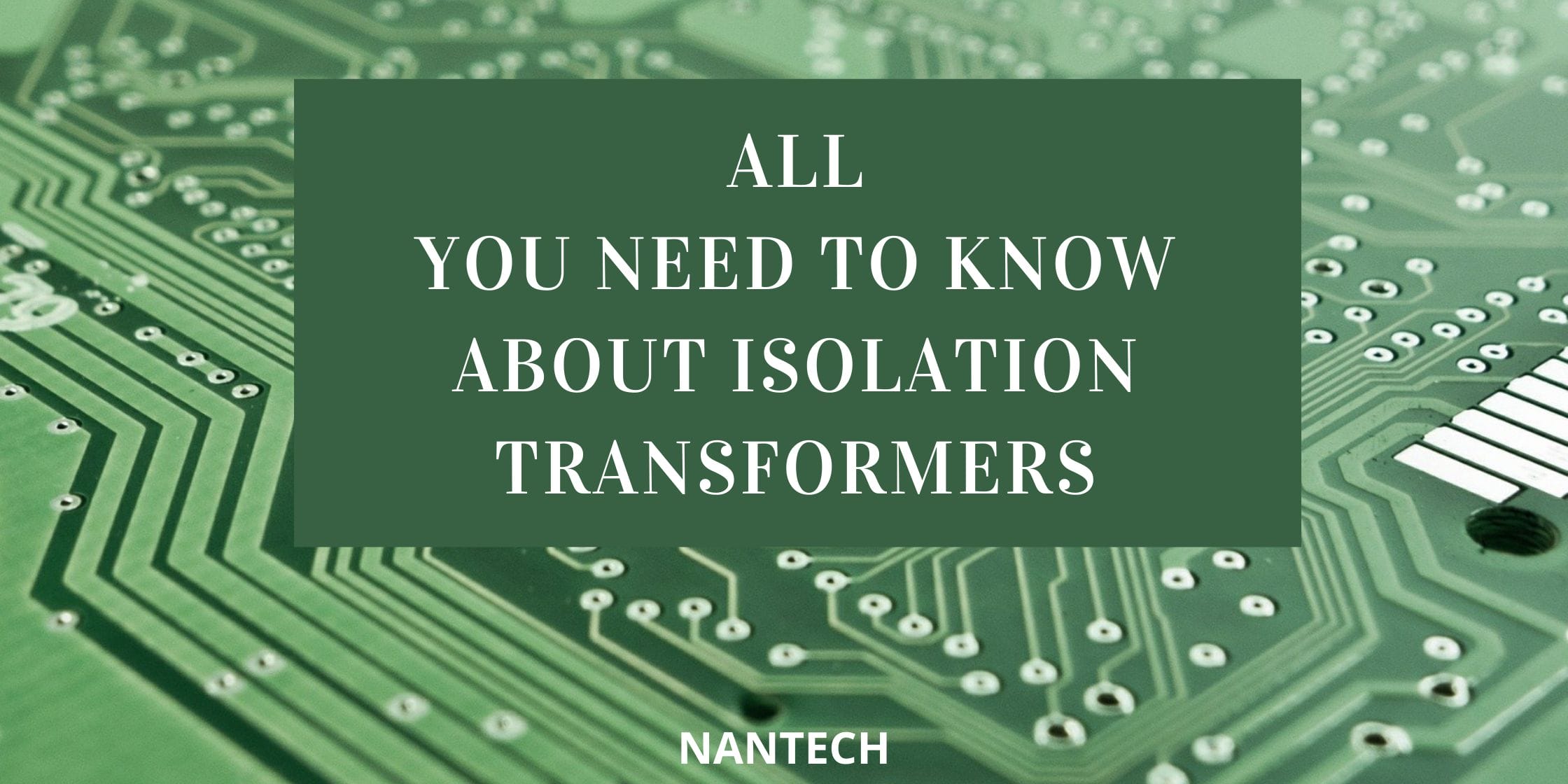
2020 has been a challenging year. Every individual has been forced to take precautions to prevent the virus from sabotaging them. Whether it was the government or renowned celebrities, they all emphasized one thing, stay safe. Safety is one important component to prevent numerous avoidable accidents, be it road traffic accidents or medical accidents, or even electrical accidents. Electrical accidents are usually curbed by planning circuit with every component engineered so that the whole system is fail-proof. One important component is the use of isolation transformers in this circuit. They provide safety gear to the equipment connected to it thereby rendering the gadget and the user using it free from hazard. Chennai is a major contributory city when it comes to hardware industries. It has the most productive technological advancements, giving us all the more reason to buy our electrical hardware. On its ground is the Nantech power systems Pvt Ltd, a manufacturing company that manufactures the most credible, durable, and top-level isolation transformers.
Isolation transformers are transformers that provide galvanic isolation between the powered device and AC power lines such that there is no DC path between the two. They are used to transfer electric power from an alternating current power source to a device, isolating the power source's powered device. This is usually done for safety purposes like to protect against electric shocks, to transmit power between two different circuits which are not supposed to be connected, and is also used to suppress electrical noise in sensitive appliances.
Isolation transformers permit the transmission of signals of the AC component to pass but prohibit the DC signals' transmission to pass through from one signal to the other.
 They serve three main purposes:
They serve three main purposes:
They are designed in such a way they block the interference caused by ground loops. These transformers have turned in the ratio of 1:1 such that the number of turns in the primary and the secondary windings are equal. However, when the voltage needs to be altered, isolation transformers are used to step up and step down.
What are the uses of Isolation transformers?
The primary uses of isolation transformers are as follows :
What are the specialized applications of isolation transformers?
These are isolation transformers made for a vast number of devices used for commercial purposes.
Isolation transformers are designed especially for medical appliances. Medical centers need electronic devices that require high voltages and are sometimes risky to operate. In these cases, the user's safety, the patient, and the device itself should be considered a top priority. Medical isolation transformers fill this gap, act as a gatekeeper, and provide protection.
Other specialized applications and their isolation transformers include – Pulse transformers, Austin transformers, Instrument transformers, etc.
Isolation transformers are not only used for safeguarding our electronic equipments, but they also make working on an AC appliance so much easier. They work in so many ways to help us bring the best out of the devices we use without any interruptions of any sort. Another added advantage is that they are enormously useful for testing power-related devices.
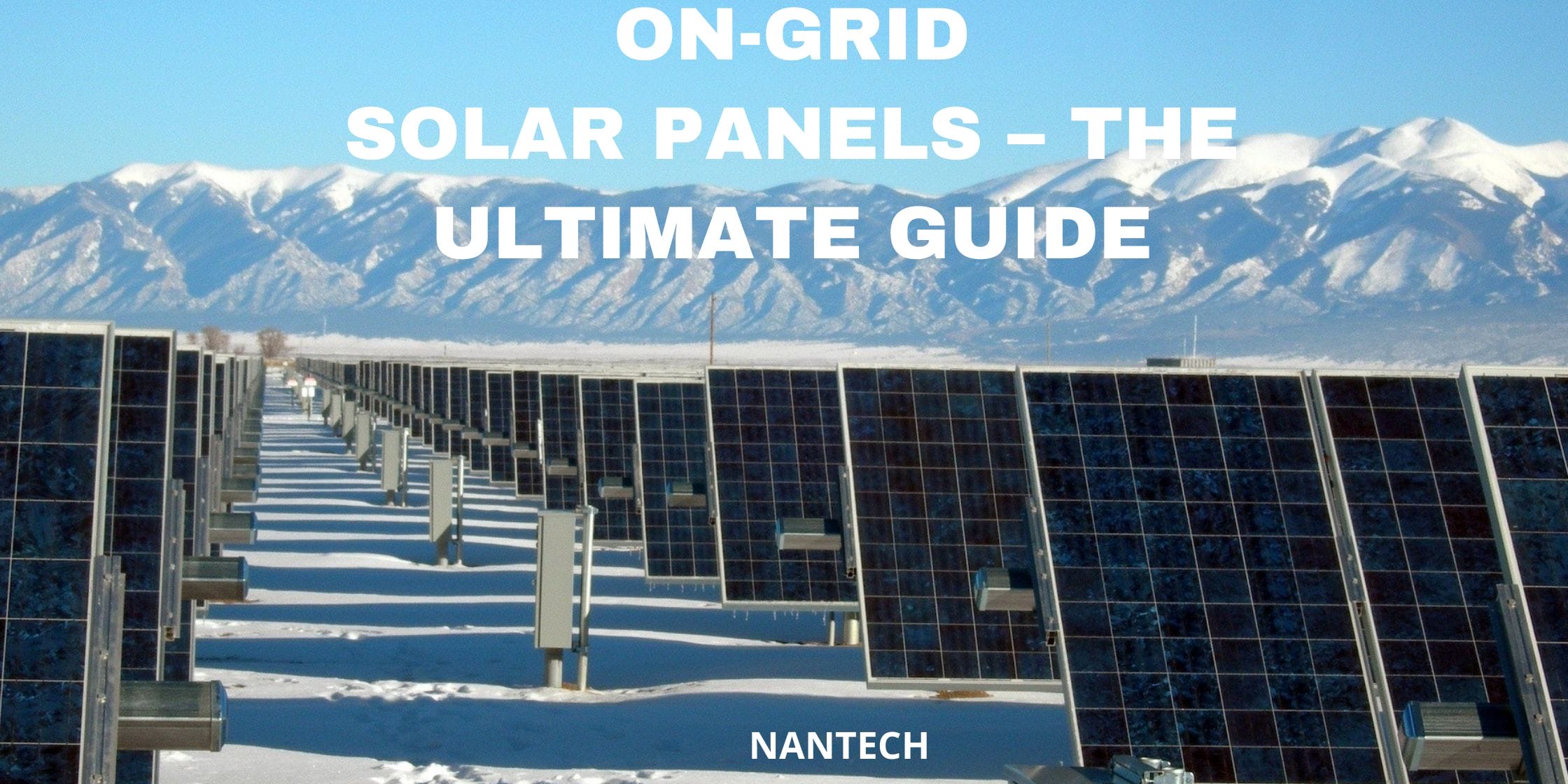
A recent project Mahindra world City is going to be Chennai’s first place, based on environment-friendly principles. It is based on Zero Waste to Landfill Certification which means it is diverting industry waste away from landfills. This leads to a decrease of 115 tonnes of CO2 emissions every month. There are many other ways to minimize environmental damage.This includes investments on more solar, hydro and wind power.
When it comes to Solar power systems, they are divided into three types. On-Grid, Off-Grid, and Hybrid Systems. Nantech has got you covered for in-detailed information about On-Grid Solar System.
On-grid solar power is a system where the generation system is connected directly to the utility grid. The electricity produced through solar systems is routed to the primary utility grid from where the electricity is run through a house and further used for appliances.
These are also known as a grid-tie or grid-feed solar system. On-Grid solar systems are one of the most widely used solar power systems. With new technological advancements, people have started to rely on solar systems, and On-Grid being the most in-demand.
Working of the system
The system works in two ways.
These features make the On-Grid system highly useful and affordable. The solar panels installed on the user's home are tied to the Grid. The panels convert sunlight into direct electricity, also known as Direct Current DC). This current is then stored in a solar inverter. The Solar Inverters then convert Direct Current to an Alternating Current. Alternating Current (AC) makes the power accessible and ready to use for electrical items. The electricity is routed to the utility grid, where it is supplied for day to day use.

The grid tier inverted additionally regulated the amount of voltage of electricity used for the household requirements since all the collected power is mostly much more than household usage, needs, and is usually higher than it can handle. One of the essential features is the net meter. It is a device that records and measures the energy supplied to the Grid and the energy consumed.
At the end of every month, an outstanding is recorded, and a bill is provided for the electricity consumed. A solar meter is also used to measure the power generated. The converted energy is stored and then used by homes through the main electricity distribution panel. Battery Backup is not a requirement.
Solar power systems are the future of clean, reliable, and renewable power solutions. Setting up a Solar System is valuable for the environment and humanity themselves. Thus, moving forward towards the future with Solar energy is one of the decisions for us.
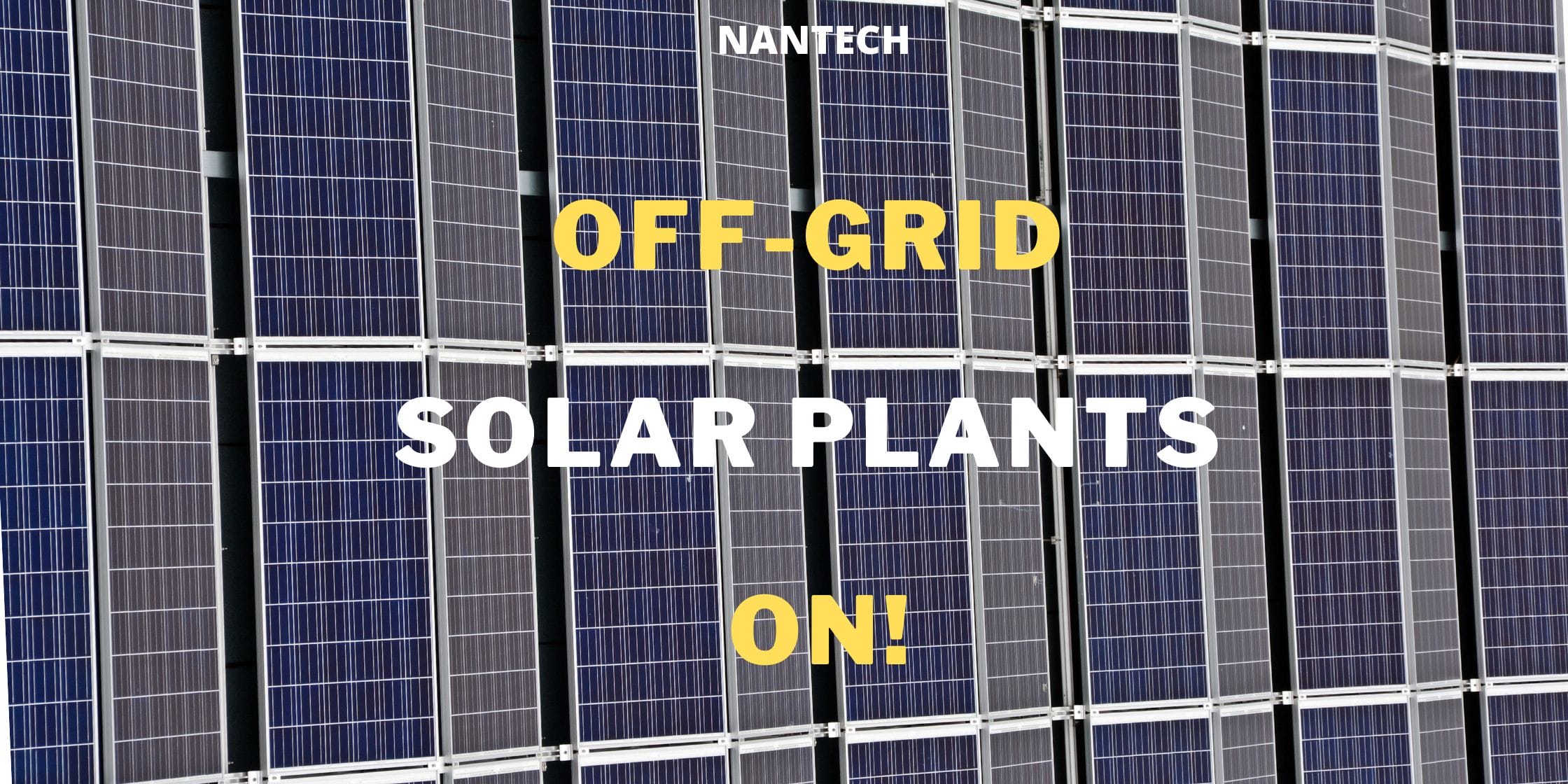
With the continually increasing concerns of global warming, there has been a lot of awareness about using clean energy. Solar energy is one such form of renewable, affordable, and inexhaustible energy that we can extract from nature and, in a way, for nature. However, setting up a whole new solar energy system with many options available can be baffling. Opting for solar energy set up requires a fixed commitment and long-term investment. Therefore, it's necessary to do little homework before choosing the solar plant you wish to install. Solar plants are of two types an on-grid solar plant and an off-grid solar plant. An on-grid solar plant generates electricity and is directly connected to the utility power grid.
On the other hand, the off-grid solar grid does not work in conjunction with the utility grid. Instead, they are connected to batteries, which store the power generated by them. Chennai, being a coastal region, often suffers from gloomy and cloudy days. If an on-grid solar panel is the only source of electricity, there could be times when the consumers will have to suffer from power cuts making an already gloomy day gloomier.
When it comes to such rainy, cyclone-prone areas, using an on-grid solar plant is not an extremely reliable option. To curb this problem, Nantech Power Systems Pvt. Ltd, a company based in Chennai, has got you covered. Having expertise in manufacturing power equipment, this company is like a ray of light to fill your ill-lit days with dazzle and sparkle.
Off-grid solar plants work independently of the grid. They have the following components :
The solar panels absorb solar energy, and the excess energy is stored in the batteries. This stored energy from a previously sunny day can be used when the sun has set or during cloudy days when there is no sun at all. These are self-sufficient power providers in areas where power grids remain unavailable, like in rural and remote areas, where they can provide electricity for a long time or in areas where there are frequent power cuts. Another advantage of an off-grid solar plant is that any mishaps like grid failures or shutting down of grids during stormy weathers do not prevent them from supplying energy since they are independent of the utility grids. Therefore, they are autonomous, unstoppable, and infallible. An additional advantage of using the off-grid solar plant is that you don't have to pay any electricity bill if you are using only one energy source that is of your solar plant.
One disadvantage of the off-grid solar plant is that if there are abnormally dark days in a row, the energy stored in the battery may get exhausted, limiting its use. Another disadvantage is that they are costlier to install. However, one should note that the number of benefits an off-grid solar plant has overridden the costs of installing it. Thus, by choosing it, you are self-sufficient and fulfilling your duty as a responsible inhabitant of the planet.
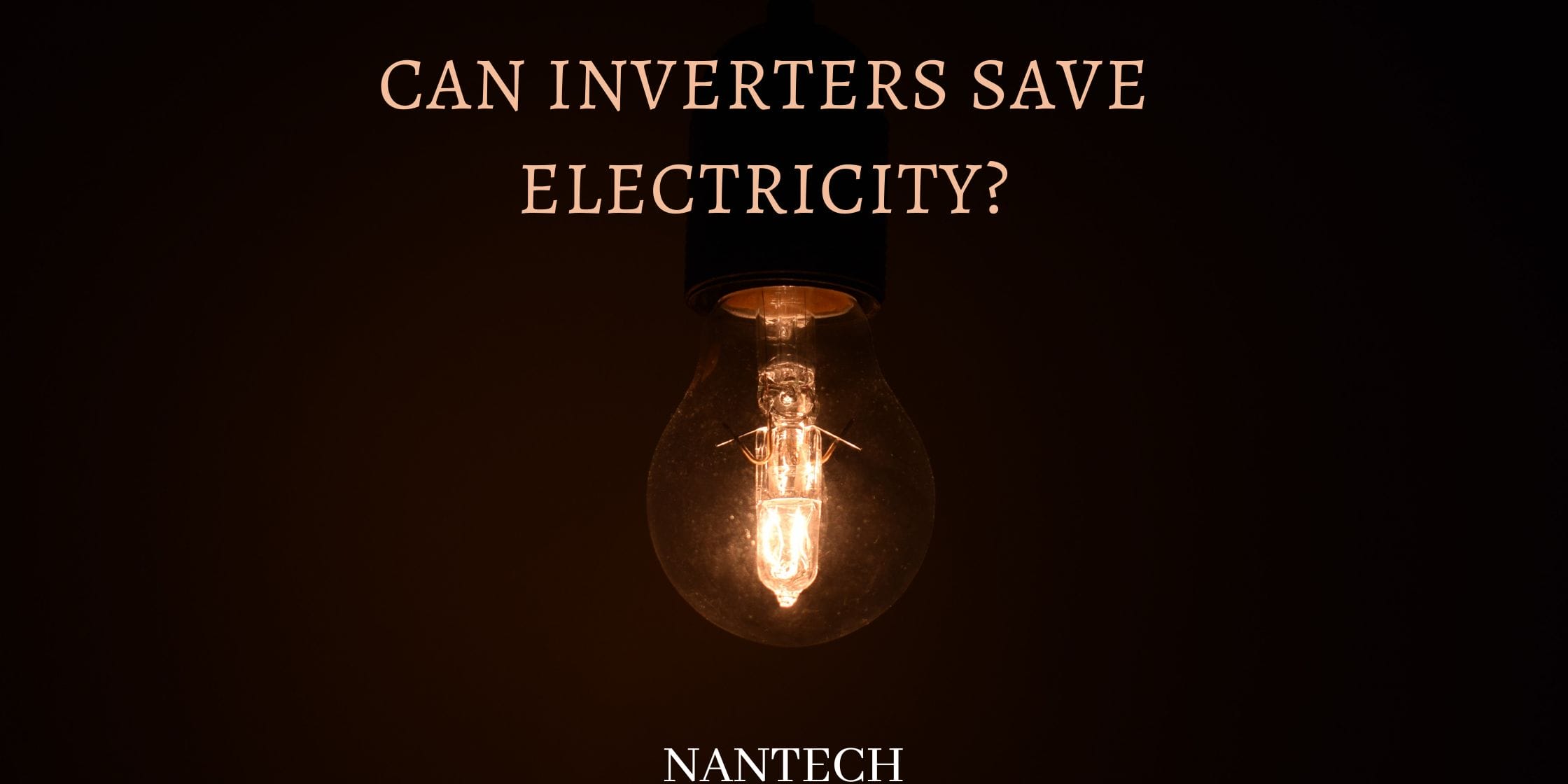
Inverters are devices that are very commonly used as a back-up during a power outage. Chennai faces such power cuts on multiple occasions. Although there is no power supply from the mains during a blackout, inverters keep supplying uninterrupted electricity. Inverters thereby act as reserves of electricity but can they also save electricity? If so, how do they do that? Let us find out.
How Do Power Inverters Function?
Can Inverters Have 100% Efficiency?
How Can Inverters Save Electricity?
How To Eliminate Losses?
It is observed that the higher the inverter capacity, the higher is the loss of energy. Thus, it is recommended to know the power requirement of your residence or workplace.
Also Read: Implications of Power Cut on Smart Homes & Remedial Measures
Overcharging:
Quality check:
Overload:
Maintenance:
Reach out to us if you are in search of an inverter that can 'save' electricity.
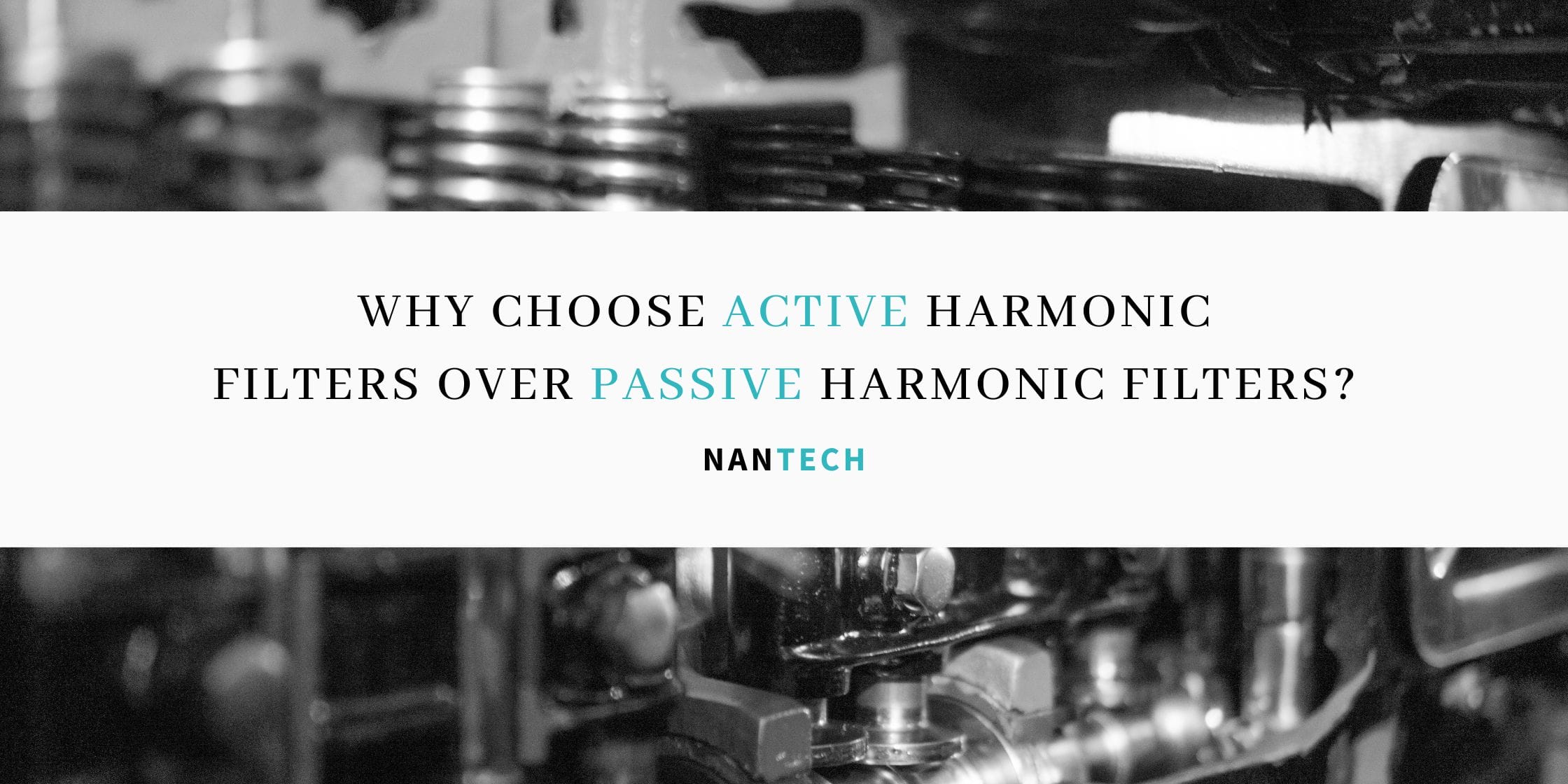
In Chennai, a power supply of an average of 1000MW is given by the power plants. The electricity that comes from these power plants is not clean. The harmonics can cause equipment malfunction or failure because of the voltage fluctuations and distortions in the supply line that can deteriorate the voltage quality. Harmonic Filters reduce risks by reducing harmonic – and you always want to keep the harmonic pollution to under 5%.
One way of reducing harmonic pollution is by using Harmonic Filters. A harmonic filter reduces harmonic pollution and improves Power Quality by dynamic filtering of currents. They are installed for plants and households to improve overall current and voltage outputs. They come in two variants – Active Harmonic Filters (AHF) and Passive Harmonic Filters (PHF).
Passive Harmonic Filters mitigate harmonics by filtering the current wave through an input reactor, output reactor, shunt reactor, and capacitor. They are only limited to individual and stable loads. They are usually limited to their effectiveness and capacity and cannot work with many non-linear loads.
Active Harmonic Filters are used to eliminate or mitigate harmonics from the power received by using a series of transistors and capacitors to clean the current fluctuations. They are larger than Harmonic filters and require more space. They are useful for factories where a constant electricity output is necessary. And they are most effective in maintaining businesses by guaranteeing reduced costs and ongoing outputs.
Also Read: What Are Active Harmonic Filters And Its Application?
In modern-day Chennai, as demand for more output increases, we must consider which filters we use for our plants. And we recommend AHFs over PHFs. Here’s why:
Since Chennai is now the hub for many businesses, Nantech has the best AHFs to buy in Chennai.
Happy Shopping!
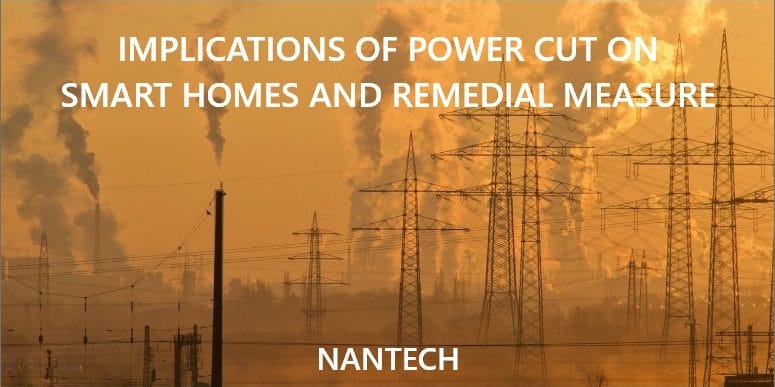
Power cuts could prove detrimental to your machinery if they are not properly maintained. Depending upon the reason for the power cut, it has a different effect on the home. If an overload is causing abrupt spikes in electricity, the central power grid may get severely damaged and cause overheating of the appliances. If the power cut is due to undue power failure from the mains, it is usually less detrimental. Still, if it often occurs, in the long run, it may reduce the efficiency of your machinery as it pushes itself to function against the low voltage. Some machines require more energy to start rather than run for long durations. A higher electricity bill is consumed in regular power cuts, and a higher electricity bill is generated.
Power cuts could also be due to faulty wiring and structural weakness in the electricity grid at home. That endangers the lives of the inhabitants of the house and may even damage society's central grid. Faulty wiring is one of the lead causes of electricity-related fires globally and is highly prevalent in Chennai's developing areas like suburbs or rural areas surrounding Chennai. Not to mention; the gross inconvenience caused to the households. Computers may stop working, which may lead to loss of data or inadequate job productivity.
Refrigerators and microwaves might stop functioning, and if this goes on for long, a lot of food might get wasted. If the aqua-guards do not function, potable water might not be available. This problem is severe for Chennaites because of the severe water shortage already existing in the city. So, several issues can arise from power cuts. In June 2019, there was a power cut almost daily, affecting the health of lakhs of Chennaites amid summer!
So, let us take a look at some of the solutions:
Buy and use quality products and maintain them. Faulty wiring or low quality of semiconductors in the machinery itself may cause damage to both the machinery and the home's wiring. Make sure that all wires should be insulated, and the machine should not cause a shock.
If you notice that the current is facing fluctuations, it could be due to harmonic wave interference caused by low lights or switched-mode devices. It is advised by Nantech to install an active Harmonic filter or a servo stabilizer to prevent any power quality-related complications.
Ask your neighbours if they face a similar situation to determine if it is a problem in your house or a defect in the central electricity supply. If there seems to be a central problem, promptly inform the authorities. If it's a problem at home, check using a tester if there is any problem with the machine you are having trouble with. If you suspect some other cause, call a technician immediately.
This will ensure that you will not be a victim of power surges, and most of all, you will be protected from electrocution or fires that may prove to be fatal.